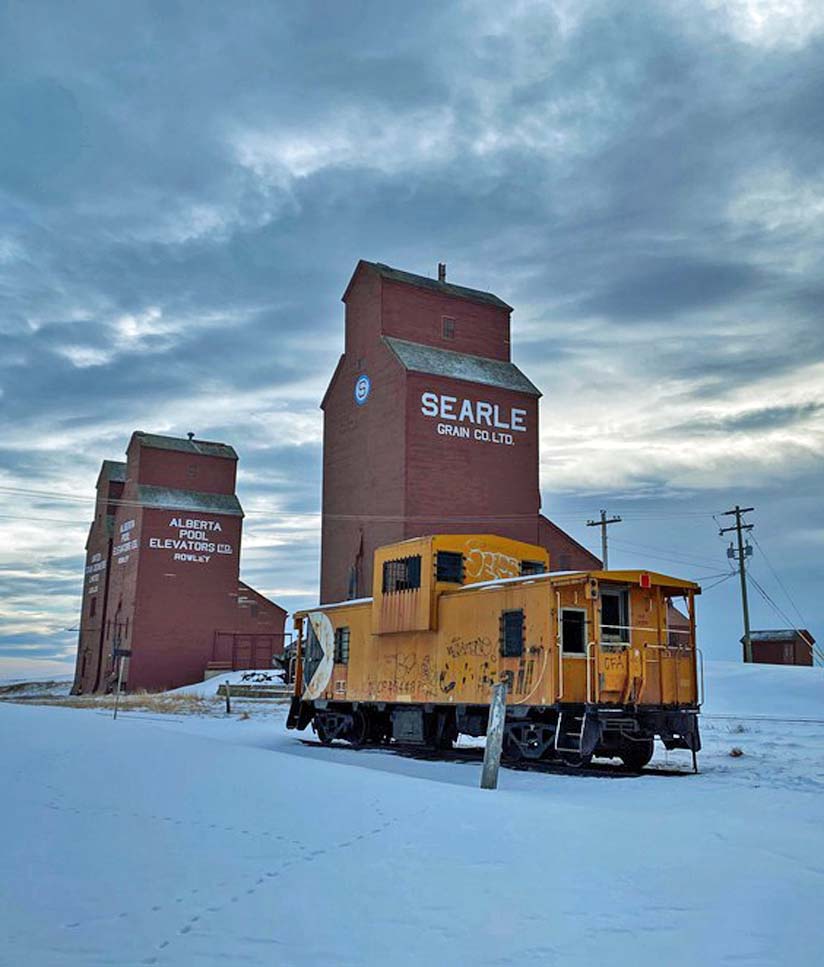
Retlaw Albarta - Beside a dusty gravel road near the town of Vauxhall sits a beautifully restored church, a well-kept cemetery, a community
hall, and a few other dilapidated buildings.
It's all that remains of the once-thriving community of Retlaw.
The wind blows through the prairie grass as my husband and I wander through town reading handwritten interpretive signs and photographing old
buildings.
There's something hauntingly beautiful about ghost towns, and it's not ghosts.
Empty streets and crumbling buildings stand as a testament to the power of time and a reminder of how fleeting life can be.
Even communities that were once home to dozens of shops and hundreds of people living busy lives can succumb to economic challenges and dwindle to ghost town
status.
"Ruin gazers" is a term used to describe people with a fascination for exploring abandoned places, and some ghost towns are prime sites for this kind
of tourism.
If you want to try a little ruin gazing, here are three fascinating Alberta ghost towns that are well worth a visit.
Retlaw - Walter Spelled Backwards
When the Canadian Pacific Railway (CP) arrived in 1913, the community that used to be named "Barney" became "Retlaw" in honour of Walter R.
Baker, a CP official.
"Retlaw" is "Walter" spelled backwards, and the community was expected to be a major centre.
The town had a CP railway station, four grain elevators, a hotel, a bank, a blacksmith shop, a pool hall, two churches, and several other
businesses.
So what went wrong?
Retlaw is located in a dry region of Alberta that suffered from frequent crop failures.
When the province of Alberta built an irrigation canal near Vauxhall in the 1920s, people moved where the water was.
If you visit Retlaw ghost town, start at the cemetery.
Inside an unlocked small white building, you'll find a binder compiled by the Retlaw Historical Society that contains information about births, deaths, and
marriages in Retlaw.
Next, head to downtown Retlaw.
As you walk around town, you can read handwritten interpretive signs created by the Retlaw Historical Society.
If you want to book an event at the church, or go on a guided tour of the town, email tculverfranz@gmail.com in advance.

Rowley - Pizza and Camping in a Ghost Town
About 30 minutes northwest of Drumheller, the hamlet of Rowley has a present-day population of about eight people, down considerably from its peak at about
500.
Rowley was incorporated in 1912 and was named after Lieutenant-Colonel Charles Walsh Rowley.
In 1919, the Canadian National Railway (CN) came to town.
The town had a rail station, several grain elevators, a hospital, a general store, a movie theatre, a garage, a livery stable, a church, a saloon, a
restaurant, and many homes.
In the 1980s, locals began fixing up the old buildings and the ghost town has since become a tourist attraction.
Rowley was the film site for the 1989 Hollywood movie, "Bye Bye Blues" so the boardwalk and some of the buildings created for the movie set are
still standing.
If you want to stay overnight, camping is allowed in a small campground on the west side of town.
Payment is by donation.
The last Saturday of every month has traditionally been pizza night in Rowley, and in the past, it has been a real party atmosphere with many visitors in
attendance.
After months of cancellations, pizza nights resumed on 26 Jun 2021.
Check the Rowley Facebook page a few days before the last Saturday of the month for details on when locals will be holding the next pizza night
event.
Debbie Olsen.
(because there was no image with original article)
(usually because it's been seen before)
provisions in Section 29 of the Canadian
Copyright Modernization Act.

